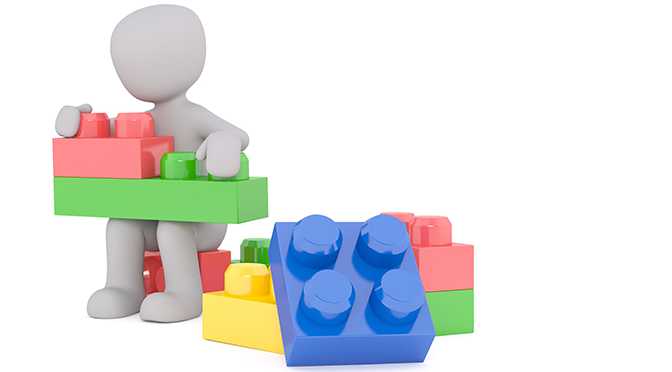In this second blog about our Service and Design patterns work we describe how we have created a new development tool that will allow us to deliver valuable software products faster and more efficiently and which has already proven its worth during the pandemic.
Through the mapping and design of a number of end to end journeys, (see our earlier blog) we have been identifying common service patterns that bring consistency to customer experience, are repeatable across different service areas and can help us better prioritise time and public monies.
The most frequently requested service patterns often require the creation of a bespoke online form. Until now it has taken around 2 weeks to develop the coding for these forms. So we have been creating a software system to reduce this coding time, enabling us to efficiently apply the patterns across multiple service requests.
Is a form the correct solution?
Having a simpler software development process doesn’t mean a software product is always the right solution. We still prioritise learning about the user and their needs, where the real issues are and why we need to do anything in the first place.
If we do then produce a software solution based on this, it’s more likely to provide the right value. It is also clearer when we need to change direction, or when to stop.
What would success look like?
These are the goals we set ourselves:
- Stockport Council is committed to using a collaborative learning approach to deliver the right value, and to avoid doing the wrong thing. We aimed to improve collaboration across roles during the entire learning/development process
- reduce coding time of our commonly needed products from around 2 weeks to just 3 days.
(yes really…) - shorten the time between an idea being formed and gathering learning from working software from days to potentially hours
- increase ease of adapting the product to meet changing requirements during the learning/development process
To achieve these goals, we decided to build a bespoke software development tool, and we called it Formbuilder.
What is Formbuilder?
Formbuilder is essentially a number of ready to use building blocks of code. Each block creates a capability commonly needed on an online form, such as enter details, upload a document, look up an address, make a payment.
Blocks can be selected as required and pieced together with others, in pretty much any order. A few building blocks together quickly creates a real working piece of software that can be demonstrated, usability tested, and/or released to live.
What are the benefits?
If any changes to the software are needed, these can be made more simply and quickly than before.
As we learn more, or user/business needs change, the catalogue of building blocks we can select from can be iterated upon or new ones can be created.
Because the Formbuilder development tool was designed in house to our specific needs, we can make these changes how and when we like without having to rely on a 3rd party supplier.
The following crucial elements are also built into the building blocks, and the resultant solution.
- accessibility – to ensure we are compliant with the new EU Directive on Accessibility by September 2020
- a common look and feel for ease of use / customer confidence
- quality levels which are consistently met
- a build process that is relatively simple for developers to pick up
- ability to ‘plug into’ different IT systems used by the council, if suppliers change or systems are upgraded
Case Study: Formbuilder – Proving its worth in exceptional times
The pandemic has meant that the council and multiple support agencies have needed to react fast to provide support to the public.
A decision was made on Friday 27th March at 4:00pm to use a new online form, built using Formbuilder and the council’s corporate case/contact management system. This solution went live on Monday 30th March.
This means that multiple roles and support agencies were able to collaborate to analyse a problem, design, code then put live a full working solution in just 3 days including a weekend. That is a huge achievement!
Since then a few more iterations of that solution have gone live, with similarly tight timescales. The form has been used both by the Contact Centre staff handling calls and by the public themselves, with around 500 vulnerable people being helped so far during this very difficult period.
Not only were the Formbuilder goals of rapid form development and collaboration met, but the new Formbuilder exemplifies our Agile approach, allowing us to quickly adapt our service offer in a rapidly changing world. It is also user centred, being based on identified user journey patterns.
What’s next?
We now have a number of building blocks to choose from, including: Integration to the case management system, uploading of multiple documents, downloading of a document, validation and error messages, optional and multiple choice elements, check boxes, drop down lists, radio buttons, street look up, manual address entry, configurable headings and labels, text entry, time entry, date entry…. (not an exhaustive list).
The next building blocks we are adding will give us the ability to build forms that require a user to view/indicate something on a map e.g. a streetlight, and those that require payments to be made.
Read next blog about Formbuilder.
For regular updates from the #DigitalStockport blog sign up for email alerts.

